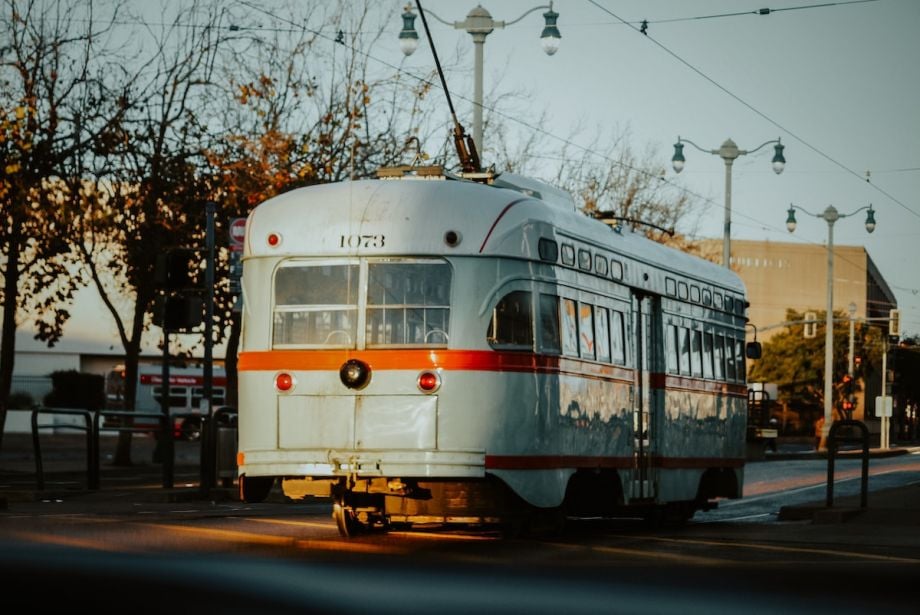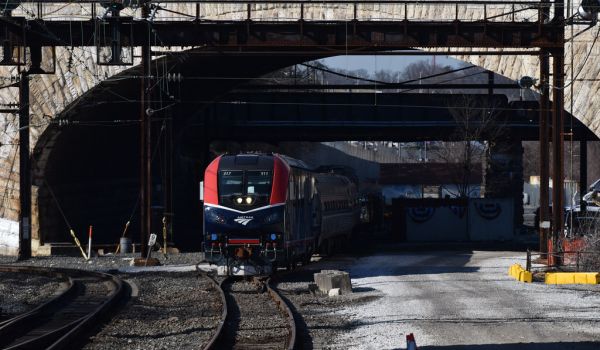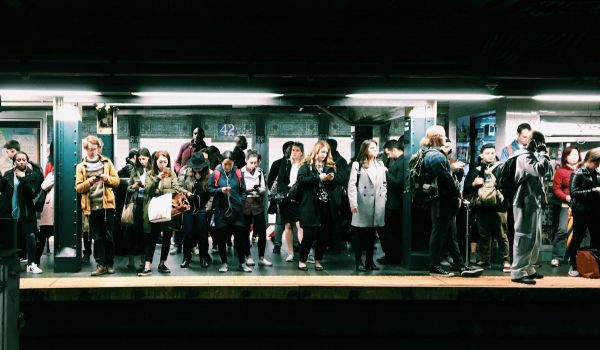Many a scholar and policy analyst has lamented the United States’ dependence on cars and the corresponding lack of federal investment in public transportation throughout the latter decades of the 20th century. But as I show in my new book, “The Great American Transit Disaster,” our transit networks are bad for a very simple reason: We wanted it this way.
Focusing on Baltimore, Atlanta, Chicago, Detroit, Boston and San Francisco, I trace the overwhelming evidence that transit disinvestment was a choice rather than destiny. There were a few exceptions to this mostly distressing story – such as San Francisco, where the publicly-owned Municipal Railway, or Muni, offers positive lessons for contemporary policymakers, politicians and voters.
During the first postwar decades, mass transit declined rapidly in the San Francisco Bay Area as in the rest of America. Despite the dense, transit-rich area that comprised the city of San Francisco, auto registration in San Francisco County (comprising the central city only) increased 48.8% between 1945 and 1950. Like its peers elsewhere, San Francisco’s postwar political leadership devoted itself to expressways, downtown parking ramps, slum clearance and urban redevelopment, and streetcar substitution with buses and electric trolleybuses. These projects, to varying degrees, disrupted transit-centric neighborhoods and patterns of travel. The number of Muni passengers declined in San Francisco from 332 million in 1945 to 197 million in 1965. This steep decline in ridership was typical for cities nationally.
Yet, crucial differences distinguished San Francisco’s 20th century transit history from many other American cities. At many points, San Francisco could have ended up with much less transit, zero rail service, many more highways, more destructive urban renewal, and as a combined result, even fewer transit riders and less service. San Francisco, for instance, refused to sell to Western Transit, a subsidiary of National City Lines, even if it meant accepting the idea of long-term public subsidies. In San Francisco, citizen resistance to redevelopment and highways, public support for transit, and elite devotion to the center city helped balance the scales between automobiles and mass transit.
More broadly, the combination of timing, subsidies, density and demographics proved crucial to leaving more transit in place in San Francisco, and thus sustaining more ridership and political support, than a typical American city. San Francisco has much to teach Americans looking to dig their way out of a deep transit deficit.
High-quality service wins
The pace of Municipal Railway line development picked up in the 1920s after demonstrating the benefits of new equipment and service. Muni, drawing on property assessments placed on areas enhanced by extensions, built projects like the Twin Peaks (1923) and Sunset (1928) tunnels that provided rapid service through steep hills to mostly undeveloped western and southwestern areas of the city.
A leading transit expert in 1931 claimed that “the transportation service rendered by the Municipal Railway is found to be of very good quality” and predicted correctly that San Francisco “will be one of the last cities in America to witness the disappearance” of streetcars.
Density generates riders
Muni benefited from a 1921 zoning code that permitted high residential density in many areas where streetcar lines, often under political pressure from residents, had extended. The dense zoning contrasted strongly with more typical cities like Baltimore and Detroit that set stringent limits on residential and commercial development further out to the detriment of the transit operator.
San Francisco’s families, crowded tightly into aging wooden walk-ups in the city’s close-in neighborhoods, now used the Muni lines to ride to new and more spacious housing in areas such as the sprawling Richmond and Sunset Districts. As families moved into the mix of housing developing along the lines, density rapidly increased.
Protect public assets from vulture capitalists
In 1944, the Muni merged with its privately-held rival, the Market Street line. Most of the Market line vehicles, 440 in total, were old and in poor condition, and 79 were inoperable. While Muni ridership was high, managers knew full well that the end of gasoline and tire rationing and wartime industries spelled trouble. Labor costs were also rising rapidly thanks to a successful strike and generous new contract (1946).
Despite the merged company’s faltering condition and the prospect of deep and endless subsidies, the city resisted the siren song of selling to those associated with the NCL concerns. In 1947, Jesse L. Haugh of Western Transit Company in neighboring Oakland announced that he wanted to lease and operate Muni. Haugh was a significant force in Western Transit, Pacific City Lines, and NCL—all institutions devoted to bus substitution as the basis for postwar transit profits.
The Public Utilities Commission, of which Muni was part, believed that “a public utility of the MR exists for the sole good of the people. In private hands it exists primarily for private profit and gain. Consequently, the only way Western Transit could stay in business would be to reduce service and eliminate lines until revenues exceeded operating expenses.” The Board of Supervisors rejected the plan.
Service quality and consistency matters to riders
Public pressure was a factor in saving a few streetcar lines, elevating the trolleybuses, and making them a long-term service. Mayor Elmer Robinson almost lost reelection in 1952, according to the Examiner, “because the people don’t like buses. Nobody criticized the streetcars or trolley coaches but there was a general dislike of the buses.” The case for trolleybuses was helped by their quiet and fast operation (on steep hills) and low maintenance costs, among other factors. So attractive was the trolleybus from a financial and operational perspective that fourteen converted streetcar routes had spent only about a year as motor coaches before being changed to trolley coach lines.
By 1950 trolleybuses traveled a much-increased 6.6 million miles and gas buses 17.9 million miles, largely compensating for the significant cuts to the streetcars. A Muni advertisement in 1950 claimed that service “now runs within two blocks or less of most San Francisco residences.” This consistency of service remained even a decade later: the total miles operated in 1945 was 29 million and in 1963 still a robust 26 million miles despite massive ridership losses.
Use subsidies to keep fares low
Managers at Muni seemed to have understood that ridership had to remain high to sustain political support for a comprehensive system. They also knew that other cities were already shedding riders faster than necessary, thanks to frequent fare increases. The company kept fares low, charging just five cents a ride, and offered free transfers when average street railway fares nationwide were 8.33 cents.
Low fares would become an article of faith in San Francisco, as in Boston and New York, and helped keep transit competitive with car ownership despite the greater time and social discomfort of catching trains and buses. San Francisco maintained the five-cent flat fare for 32 years, only raising it to seven cents in 1944, ten cents in 1946, and fifteen cents in 1952. The 20-cent flat fare would only be implemented in the fiscal year 1969–70.
Slow driving helps transit
An essential factor in Muni’s long-term stability was the collapse of highway development within the city itself. City leaders in the 1940s and 1950s had planned a dense network of city highways that would have wiped out or ruined large sections of neighborhoods had they been built. The San Francisco Chronicle and groups of wealthy white residents and minority citizens whose neighborhoods lay in the target of the roads all criticized the plans. Elected officials eventually took heed and joined the movement to tame the highways.
The Chronicle celebrated halting of construction in 1959 on the waterfront Embarcadero Freeway: “We oppose and have consistently opposed the hideous monstrosity which the State Highway Commission built along the Embarcadero in front of the Ferry Building.” Moreover, the Board of Supervisors remained steadfast in its resistance in the decades to come, canceling modified expressway plans in 1966 for the Golden Gate and Panhandle Freeways. The failure to build so many highways also made the city and its neighborhoods a more pleasant and livable place to live, work and shop.
Adapted and excerpted from The Great American Transit Disaster: A Century of Austerity, Auto-Centric Planning, and White Flight by Nicholas Dagen Bloom, published by the University of Chicago Press. © 2023 by The University of Chicago. All rights reserved.
Nicholas Dagen Bloom is a Professor of Urban Policy and Planning at Hunter College. His research analyzes long-term planning outcomes in essential urban systems such as subsidized housing and mass transportation. He is the author of Suburban Alchemy (OSU, 2001), Merchant of Illusion (OSU, 2004), Public Housing That Worked (Penn, 2008), The Metropolitan Airport (Penn, 2015), and How States Shaped Postwar America (Chicago, 2019). He is co-editor of four edited collections, including the prize-winning Public Housing Myths (Cornell, 2015) and Affordable Housing in New York (Princeton, 2015)
















